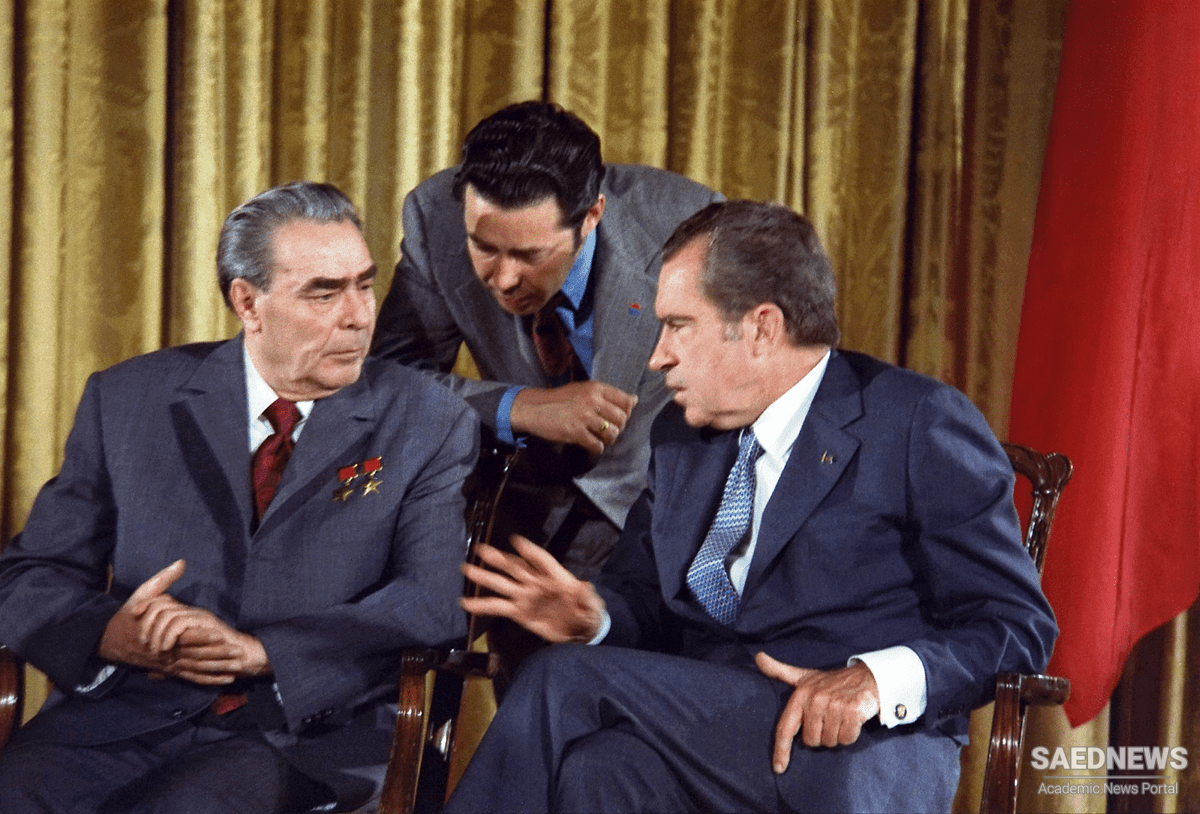The Nixon and Ford presidencies coincided with several significant developments in the region. Besides the growing Western dependency on oil (not to mention the cost of the resource, which hit record highs as a result of the embargo triggered by the 1973 Yom Kippur War), the United Kingdom’s withdrawal created a vacuum that required a further strengthening of US alliances. Unwilling to commit US troops, Nixon adopted a ‘Twin Pillars’ strategy that relied on Iran and, to a lesser extent, Saudi Arabia, to act as America’s proxies and to protect the newly independent Arab states (Saudi Arabia was added because it provided an Arab balance to Persian Iran). In 1972, Nixon personally asked the Shah to protect him and approved a blank cheque (the opportunity to buy everything short of nuclear weapons). Iran, Rubin has noted, went from being a ‘mere tripwire for triggering American retaliation against Soviet aggression’ and became an ‘actual bulwark against Soviet surrogates in the area’. All criticism stopped. US–Iranian relations reached an apex.
Over the next six years alone, this resulted in a 600 per cent increase in Iran’s military expenditure and a 10-fold increase in US military sales to Iran.25 Unprecedented oil revenues quite literally fuelled these mutually advantageous exchanges. US intelligence-gathering in Iran reached an all-time low with information from outside the Shah’s inner circle and SAVAK being prohibited. At the same time, increasingly segregated US personnel in Iran (largely tied to the military equipment sales and training) exacerbated the underlying tensions in Iran. Aware of this, the US embassy even asked for more ‘culturally sensitive and mature Americans’ to be sent.
By the late 1970s, therefore, Iran had become, in the words of the British ambassador, Sir Anthony Parsons, ‘a weighty regional buttress to overall Western, not simply American, geopolitical interests’. Three considerations in particular influenced this thinking: First, the Shah was regarded as a force multiplier allowing the US to maintain power but at the cost of subletting US foreign policy. Furthermore, Nixon’s embrace of Realpolitik dictated that the Shah be positively celebrated. To do less would undermine his and, therefore, America’s goals in the region. Second, underpinning the actions of successive administrations was the belief that development was the key to mitigating instability in Iran. Time was running out in Iran, but only, officials judged, for those who opposed the forces of socioeconomic change. As far as many in Washington were concerned, the faster change happened the more likely it was that Iran would not succumb to internal disputes. Finally, and perhaps most significantly, the obvious gains accrued from this relationship were seductive and tangible, as a 1974 embassy assessment conveys:
[The] US for its part has great stake in Iran’s survival and welfare because (A) it has ability and willingness to play responsible role in region; (B) it has history of cose [sic] and friendly ties with US; (C) it is reliable and important source of oil and other resources; (D) it is growing market for our goods and services ($7 billion in US civilian and military contracts in past two years) and a hospitable location for US investment; (E) it provides essential air corridor between Europe and Orient; and (F) it allows us to use its territory for special communications and intelligence facilities . . . in recent years and as our aid and tutelage phased out a close relationship as equal partners has evolved.


 US decision to block pro-resistance media outlets proves their influence: Yemen
US decision to block pro-resistance media outlets proves their influence: Yemen














































